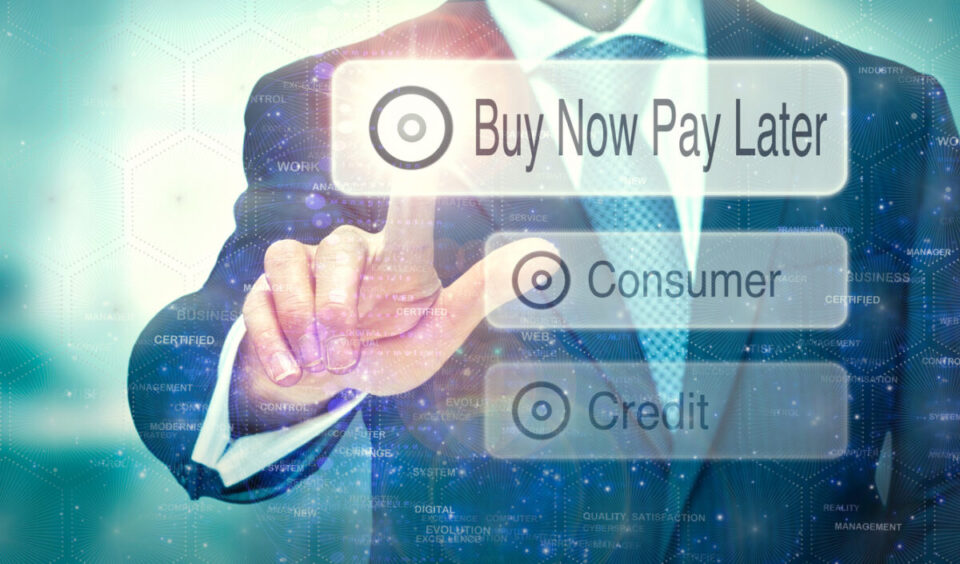The Buy Now Pay Later (BNPL) phenomenon that swept the world has massively helped both customers and businesses. During the pandemic, it gave consumers a way to be flexible with their spending and spread out payments across months, whilst small businesses were given a lifeline through it too, as they were able to increase working capital.
Marwan Forzley is the Co-Founder and Chief Executive Officer of Veem explains how this was done and why BNPL is here to stay. Veem is a next-generation global payment provider that enables businesses to quickly and securely send and receive payments in local currency. Veem uses the blockchain as a new settlement rail to enable frictionless and inexpensive payments.
Prior to Align Commerce, Forzley founded and served as CEO of eBillme, an online payment solution that extended online banking to the merchant’s checkout process. After selling eBillme to Western Union, Forzley joined the Western Union’s digital team as General Manager, eCommerce, and Strategic Partnerships. With extensive experience and expertise in eCommerce infrastructure, mobile payments, content delivery, and alternative payments, Forzley is one of the top entrepreneurs working to pioneer better payment systems.
Using this experience he told The Fintech Times how the payment industry could be better understood to make cash flow better:

The payments industry continues to be centre stage – largely due to the impact of the covid-19 pandemic and the significant shift to an eCommerce world. Shopping patterns were forced to change when the reality of a global pandemic hit. Flashback to the spring of 2020, when Amazon and UPS deliveries were the most exciting part of your week. As habits accelerated eCommerce and market growth, so did the need for digital and embedded finance. An increase in demand motivated new and existing retailers to pivot strategies to selling online, and they needed the technology to establish and support their new supplies and processes.
As businesses adapt to an ever-evolving economy, so do their needs for a steady cash flow. The Buy Now Pay Later (BNPL) solution helps bridge the gap for both consumers and businesses by providing the ability to make purchases now and pay later with little or no interest instalments. The popularity of the solution is evident and the industry must continue to offer and develop services to help keep businesses afloat and remain competitive.
The Evolution of BNPL
BNPL is new in popularity, but not in existence. The concept of paying off purchases on a weekly or monthly basis has evolved from its origin in the 1800s. Instalment selling and payments grew in popularity as a way to spread out payments on goods and services.
Modern-day BNPL is solving the same problem – but now it’s as easy as the click of a button. Seamless integrations of BNPL applications have sales booming this holiday season with no indication of slowing down amongst a younger demographic. According to Forbes, Millennials’ use of BNPL has more than doubled since 2019 to 41 per cent. Young consumers have adopted the BNPL services to strategically avoid paying the high-interest rates they would typically face when using a credit card. These offerings give consumers an attainable option to make big purchases without having to pay in full, upfront.
North Americans were slower to join the craze. BNPL peaked in Europe before becoming common practice in the North, with it now an expected option for all eCommerce shopping. Early holiday sales indicate that the steady rise of BNPL is not only prevalent in current times but will be a staple in the payments industry for years to come.
Bigger Numbers, Young Demographic
BNPL goes beyond the consumer. The adoption of BNPL is popular among both major retailers and smaller businesses. The holiday season sees many retailers allowing customers to split their purchases into instalments. 2021’s ‘Cyber Week’ at the end of November jumped a massive 29 per cent year over year, according to Salesforce data.
Appealing to younger consumers by offering alternatives opens the door to a much wider market for purchasing this holiday season. Patterns show that the top reason why consumers use BNPL services is because they want to avoid paying credit card interest, followed by wanting the ability to purchase an item that isn’t in their budget. As younger generations attempt to steer clear of traditional credit and debit debt, they continue to explore and utilise trends to help manage their spending and access to cash flow.
Businesses Benefit from BNPL
While BNPL has become a staple for consumer-centricity in the payments industry, small and mid-sized businesses almost always operate on a BNPL model and have a greater need for these types of services. Suppliers can wait months to receive payments as their counterparty examines supply, negatively affecting cash flow. For businesses, BNPL programs are an opportunity to increase working capital, enabling them to hold onto cash for longer while giving them the chance to check that the goods and services are acceptable.
Comparable to bank loans, BNPL services for businesses provide easier access to financing, enabling them to grow and innovate while waiting for a profitable return. Merchants can manage supply constraints with flexibility and help keep a steady cash flow with the help of paying via instalments. BNPL programs allow businesses to operate as usual while avoiding stagnancy issues in growth and revenue.
After the payments industry saw a digital revolution during covid-19, fintechs and online payments providers have doubled, and so have their offerings. Wary of the obstacles startups and small businesses face when applying for traditional business loans, modern payment providers have begun offering short-term business loans to customers online using innovative technology and a BNPL model.
Fintech companies will continue to expand the market for SMBs with more working capital loans, merchant cash advances, equipment financing, invoice factoring and other business loans that have been previously avoided by larger entities.


